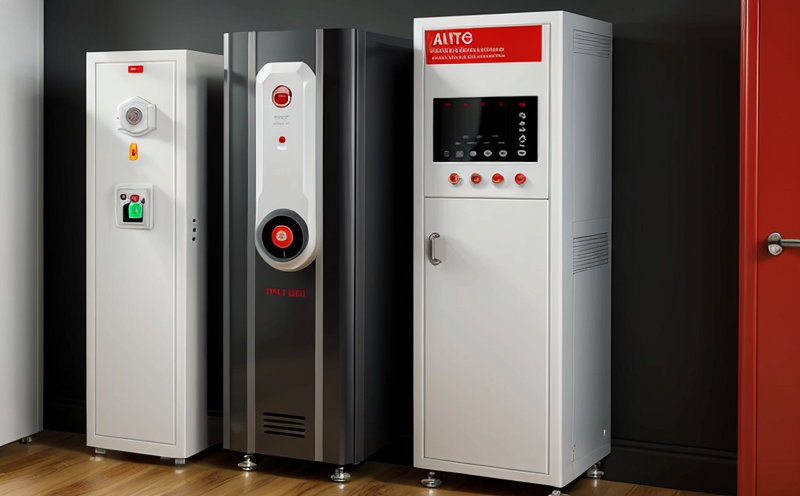EN 54-10 Flame Detectors Testing
The EN 54 series of standards provides comprehensive guidelines and requirements for fire detection and alarm systems. Specifically, EN 54-10 focuses on flame detectors. These devices are critical in early warning systems designed to detect the presence of flames, enabling timely evacuation or activation of suppression systems.
The standard covers a wide range of aspects including technical requirements for performance and operational characteristics. Flame detectors must meet stringent criteria to ensure they can accurately identify fires under various conditions without false alarms. This is particularly important in industrial facilities where even the slightest error could lead to costly downtime or endanger lives.
Compliance with EN 54-10 ensures that flame detection systems are reliable and effective, meeting international safety standards. In sectors like manufacturing, mining, and chemical processing, these detectors play a crucial role in preventing catastrophic incidents. For R&D engineers, this service offers a robust framework to design and refine products that meet such stringent requirements.
When choosing flame detectors for your facility, it is essential to understand the specific testing parameters required by EN 54-10. This includes sensitivity levels, response times, and environmental adaptability factors like dust and smoke interference. Proper calibration and periodic testing are also crucial to maintain compliance throughout the product lifecycle.
The service provided here ensures that all these aspects are thoroughly tested using state-of-the-art equipment and methodologies. Our team of experts will work closely with you to ensure your flame detectors meet or exceed the specified standards, providing peace of mind regarding safety and regulatory compliance.
Applied Standards
- EN 54-10:2018 – Technical Requirements for Fire Detection and Alarm Systems, Part 10: Flame Detectors.
The standard provides a detailed framework for the design, manufacture, installation, testing, and maintenance of flame detectors. It covers various aspects such as:
- Performance criteria
- Detection range and sensitivity
- Response time under different conditions
- Interference resistance (dust, smoke)
- Environmental adaptability
- Installation and commissioning guidelines
Scope and Methodology
| Parameter | Description |
|---|---|
| Detection Range | The minimum and maximum distance at which a detector can accurately identify flames. This is critical for ensuring coverage across large areas. |
| Sensitivity Levels | Testing the ability of the flame detector to respond correctly at various sensitivity settings, including low and high thresholds. |
| Response Time | The time taken for a detector to activate an alarm signal after detecting flames. This is measured under both ideal and challenging environmental conditions. |
The testing process involves subjecting the flame detectors to simulated fire scenarios, including varying intensities of flames, different types of combustion, and various ambient conditions such as temperature, humidity, and smoke levels. This ensures that the detectors perform consistently under real-world conditions.
Why Choose This Test
- Comprehensive Testing: Our service covers all aspects of EN 54-10, ensuring comprehensive compliance and reliability.
- Expertise: Leveraging our team’s extensive experience in fire safety testing ensures accurate and efficient execution.
- State-of-the-Art Equipment: Utilizing cutting-edge technology guarantees precise measurements and reliable results.
- Customized Solutions: Tailored testing programs to meet specific project requirements, whether they are new installations or periodic maintenance checks.
- Regulatory Compliance: Ensuring that your fire detection systems comply with international standards is crucial for safety and legal reasons.





